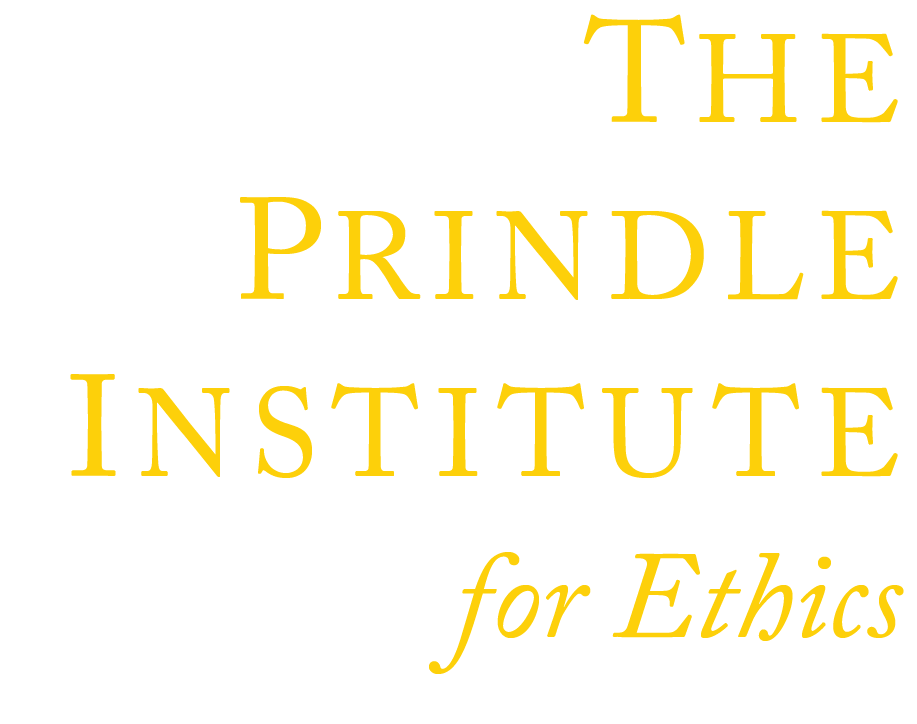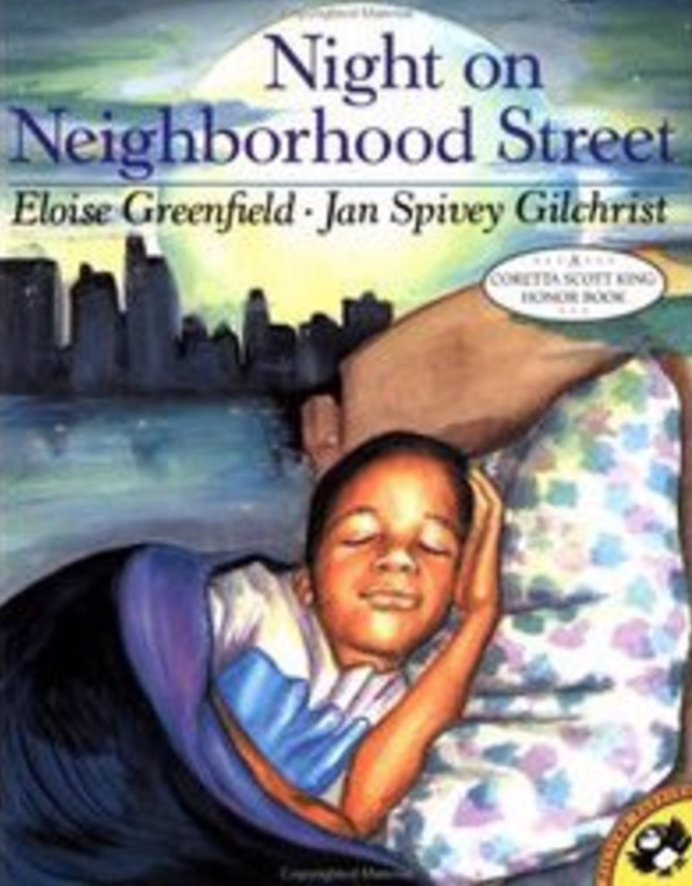Night on Neighborhood Street
Book Module Navigation
Summary
Night on Neighborhood Street raises questions about sadness, motherhood, pride, and fear.
A delightful collection of poems about everyday life in a city. Eloise Greenfield writes about the emotions, sounds and sights of a Black neighborhood over the course of one night.
Read aloud video of the entire collection of poems by Melania Glickman
Read aloud video of “Buddy’s Dream”
Guidelines for Philosophical Discussion
Through several short poems, Eloise Greenfield portrays many different aspects about what it means to be an African American child. Five poems have been chosen out of the book to focus on for teaching children philosophy. They are “Little Boy Blue,” “Karen,” “Lawanda’s Walk,” “Darnell,” and “Buddy’s Dream.” Since each poem is short, one main philosophical issue is tied to each, and the teacher may build further discussion from that one topic.
The first poem, “Little Boy Blue,” is about a young boy who is staring out of his window at night, waiting sadly for his friend to come home. This is a good poem to introduce the philosophical issue of sadness and ask, what does it mean to be sad? How do we know we are sad? Sadness is a great topic to discuss with younger children, because they have undoubtedly experienced sadness before. It will involve a lot of introspection for a child to look at their own life and to figure out how to explain what their sadness looks and feels like. Children are likely to think of sadness as simply an emotion, not as something that can be discussed in a philosophical way. The thoughts, feelings, meanings, and characteristics of sadness are all possibilities for discussion.
The second poem, “Karen,” is about a girl whose mother does not come home one night, so her sister takes the place of her mother and tucks her into bed. Karen says that as she goes to bed, her sister gives her “a Mama’s kiss.” The philosophical issue of what it means to be a mama is raised in this poem. This poem also focuses on the differences between biological and social conceptions of motherhood. Discussing motherhood with a group of children could lead to a fascinating shift in thought and perspective on social philosophy. For many people, motherhood means being the biological mother to a child. But what about adopted children? How does their adopted mother become a “Mama?” In this story, how does Karen’s sister gain the ability to give her sister a “Mama’s kiss?” What does it mean that Karen’s sister is being the mama, and is that possible? This might be a difficult topic for children to understand, because they will already have a schema of what it means to be a mother. Likewise, much of the world has a schema about what it means to be a mother. An example of questions to be asked is: If a child is raised by her sister, does that mean that she grew up motherless?
The third poem, “Lawanda’s Walk,” is about a little girl who is too proud to go to bed. Throughout the poem she is so tired that she is struggling to walk from her car to the house door, but she “wanted to be proud,” so she refuses to be carried by anyone. Pride is something that children will find intriguing, because they can definitely relate it to their own lives. Pride can either be a virtue or a vice, depending on how one looks at it; and this raises a discussion about the topic of ethics within philosophy. The discussion can begin with the children thinking about what they are proud about. Then, what does pride feel like? How do you know it is pride? Is it possible to have too much pride?
The final two poems, “Darnell” and “Buddy’s Dream,” can be read together because their themes connect nicely. “Darnell” is about a boy who cannot fall asleep because he is afraid, so he lies awake frightened in bed. He thinks about falling asleep and how his dreams will save him from his fears. This poem relates to the philosophical issue of fear: What is fear? What does fear feel like or look like? What are things that you are afraid of? Fear is a philosophical issue to which, once again, children will be able to relate. Once the children have thought about the straightforward questions, like “What are some examples of things that you are afraid of?”, then topics can be raised about whether or not fear is always a bad thing.
“Buddy’s Dream” is about a boy who is dreaming about himself multiplying so that there are four of him, and all the while there are people cheering him on. Since the end of “Darnell” mentions dreaming to get rid of his fears, and “Buddy’s Dream” is about a boy who is dreaming, the two poems would be perfect to read together. After reading “Buddy’s Dream,” the teacher can connect the two poems by asking: What does it mean to be dreaming? How does someone know whether they are dreaming or awake? Is it really possible for Darnell’s dreams to save him from his fears? Dreaming is a common topic in epistemology. The issue of how to distinguish reality from dreams has bedeviled philosophers since Descartes and remains a lively issue today. The idea of dreaming, what dreaming means, how you know whether or not you are dreaming, etc. can be difficult for children (and adults, for that matter) to understand. Since people are not fully, if at all, conscious while they are dreaming, it is difficult to know what exactly is going on. Therefore, the philosophical issue of dreaming would lead to a highly intriguing discussion with children.
Questions for Philosophical Discussion
Sadness
In the poem “Little Boy Blue,” the little boy is sad and lonely while looking out of his window.
- What are some things that you have been sad about?
- How do you know when you are sad?
- What does sadness feel like?
- How does your body and mind feel when you are sad?
- Is sadness always a bad thing?
- Can someone you love make you sad?
Motherhood
In the poem “Karen,” Karen’s mother is not there to put her to bed, so her sister takes her place and gives her “Mama’s kisses” before she goes to sleep.
- What does it mean to be a mother?
- What does it mean to act like a mother?
- Is it possible for someone to have more than one person who is their mother?
- How can you be both someone’s mother and their sister?
Pride
In the poem “Lawanda’s Walk,” Lawanda is too proud to admit to her father that she is tired, because she does not want to go to bed.
- Are there any times that you can recall being proud?
- What are some things that you are proud of?
- What does it feel like to be proud? Is it possible to be too proud?
- What does it mean to be proud?
Dreams
In the poem “Darnell,” Darnell cannot fall asleep because he is scared, but he thinks that when he falls asleep his dreams will save him from his fears.
- What are some things that you are afraid of?
- What does it feel like to be afraid of something?
- What is fear?
- What does it mean to dream?
- How do you know when you are dreaming?
- How do you know whether or not you are dreaming right now?
- Is it really possible for your dreams to save you from your fears.
In the poem, “Buddy’s Dream,” a boy named Buddy is dreaming about there being four of himself.
- Is it possible for there to be four Buddys in “Buddy’s Dream?”
- If so, which one is the real him?
Original questions and guidelines for philosophical discussion by Lindsay Kurahara. Edited June 2020 by The Janet Prindle Institute for Ethics.
Find tips for leading a philosophical discussion on our Resources page.






